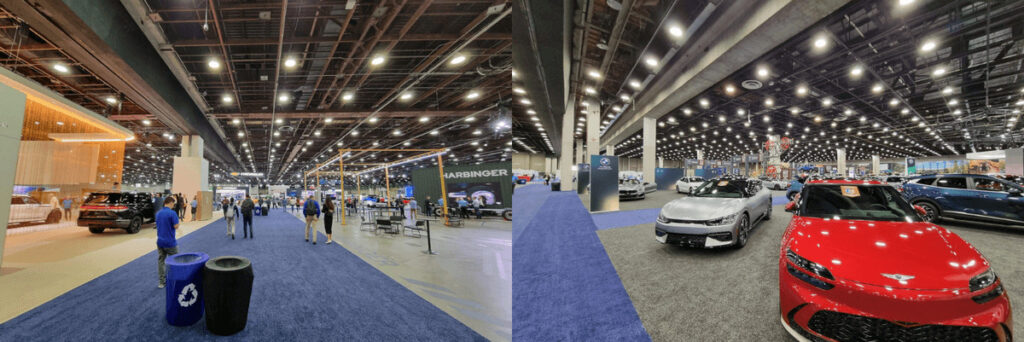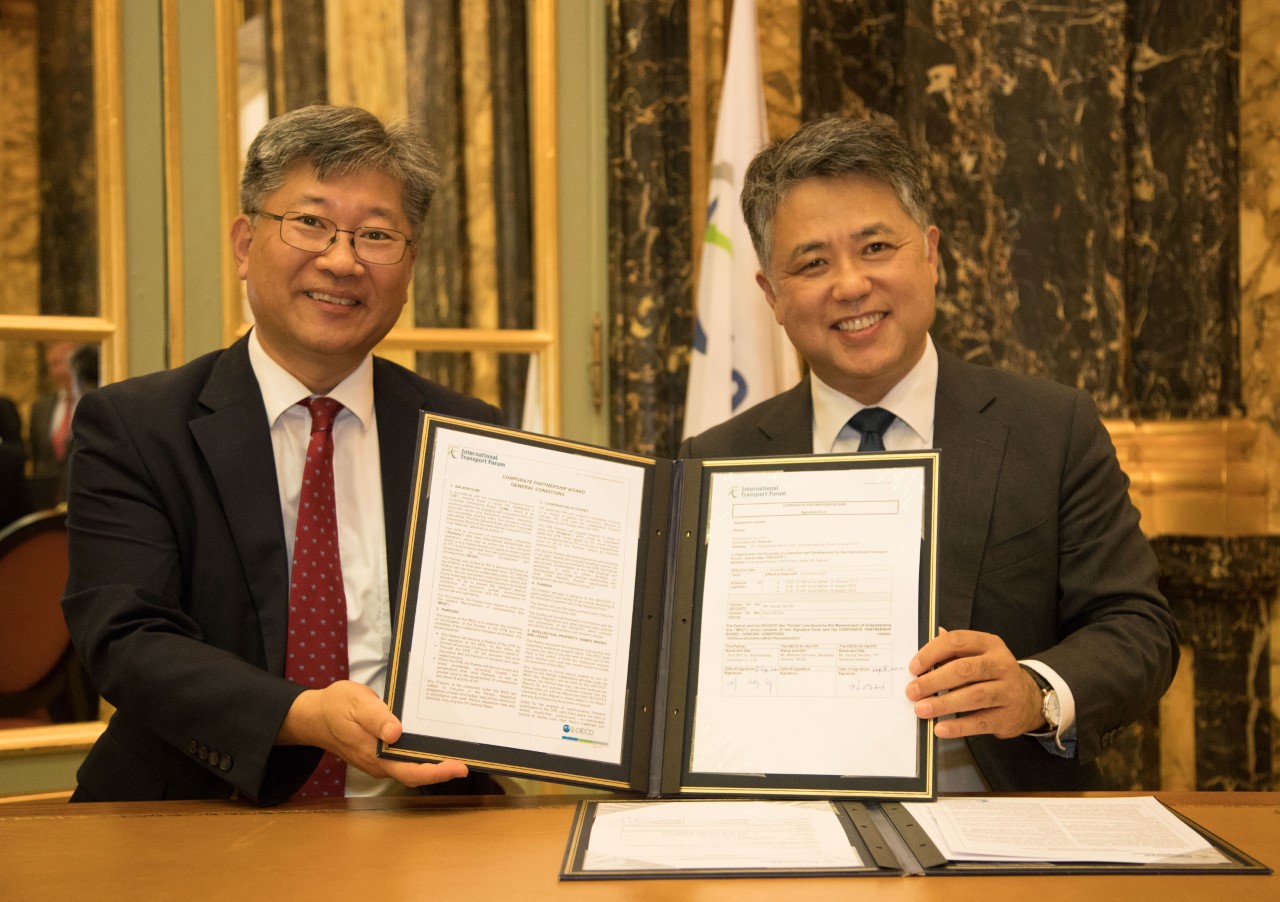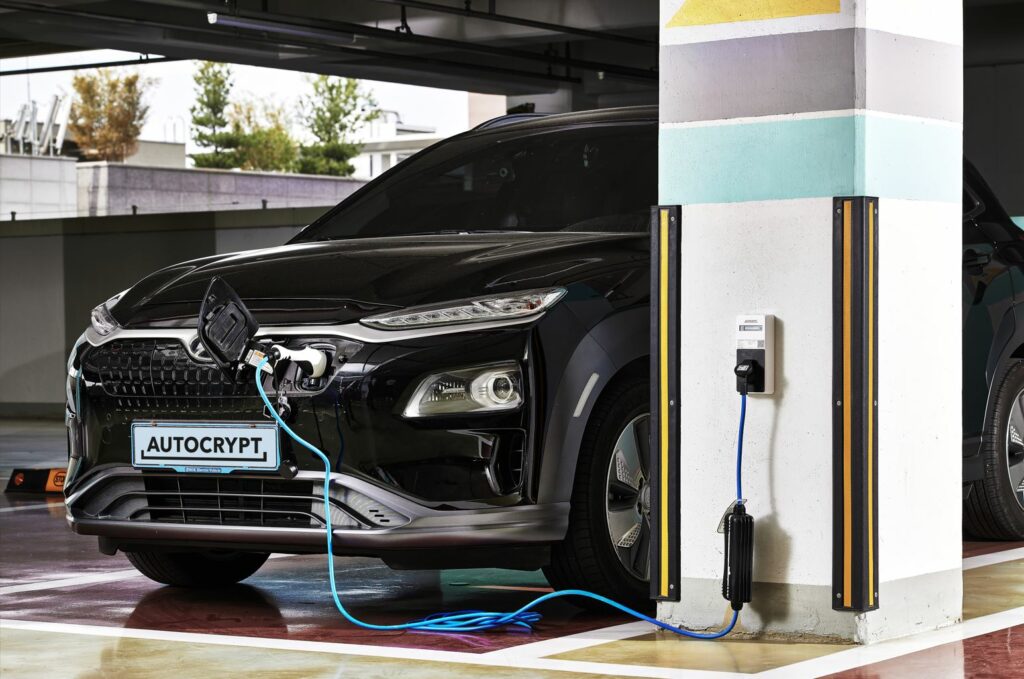This blog details AUTOCRYPT’s participation in the North American International Auto Show in Detroit (Detroit Auto Show), where our Chief Communications Officer Jaeson Yoo and Global IR Director Yohan Lepoetre introduced AUTOCRYPT and its latest technologies at AutoMobili-D – a two-day preview event for industry professionals and stakeholders, centering around automotive and mobility tech.
As the automotive capital of the United States, Detroit lies at the center of the Great Lakes supercluster – the largest automotive manufacturing region of North America, connecting the automotive supply chains of Michigan and Ontario. Yet, the city is also known for its rapid shrinkage over the recent decades, making it a symbol of a declining automotive manufacturing sector in North America. Its population, sitting at about 630,000, is now less than one-third of its peak days.
But the decline of the manufacturing sector does not signify the end of the North American automotive industry. In fact, it is only the beginning of a new era, an era where the automotive industry is pushing its boundaries upwards from the manufacturing sector to the high-tech sector. With the addition of electric vehicles, autonomous driving, and connected mobility infrastructure and services, the new North American mobility industry is now more vibrant than ever.
Detroit Is Back
The North American International Auto Show (NAIAS, or the Detroit Auto Show) finally made its return this year after two consecutive cancelations from COVID-19. As one of the largest auto shows in the world, it is the primary go-to venue for automakers to unveil new products and concept cars, gathering OEMs, industry professionals, and car enthusiasts from across the globe. Each year, the event hosts up to 40,000 industry executives and 800,000 visitors.

Since 2017, the NAIAS has incorporated a two-day preview event into the show, AutoMobili-D – an exhibition and symposium centered around automotive and mobility tech, with the goal of fostering innovations across the automotive supply chain by connecting mobility tech firms with OEMs, Tier 1 suppliers, and venture capitalists.
The growing popularity of AutoMobili-D is a strong indication of a reviving automotive industry in North America. As the focus of automobiles shifts from hardware to software, creating new values through digitalization, electrification, and connectivity, AutoMobili-D has quickly expanded to include over a hundred exhibitors from different fields.
At this year’s event, U.S. President Joe Biden made a surprise visit to announce a newly approved federal funding for the first 35 states to build electric vehicle charging stations throughout their states, helping the nation achieve its short-term goal of 500,000 publicly accessible charge points. Biden expressed his optimism for a fully electrified American highway system, announcing that Detroit is making a comeback while hopping on an all-electric Corvette.

AUTOCRYPT Is Back
Guess who else is at AutoMobili-D this year? AUTOCRYPT’s Chief Communications Officer Jaeson Yoo and Global IR Director Yohan Lepoetre flew from Seoul to Detroit to present AUTOCRYPT at the exhibition, three months since AUTOCRYT’s last visit to the city during AutoTech: Detroit in June.
AUTOCRYPT was invited to AutoMobili-D by Plug and Play Detroit, after being selected as one of the 17 startups in Batch 3 of its startup accelerator program, among a wide pool of up to 1,000 startups sourced in the program. Exhibiting at the AutoMobili-D Startup Arena, AUTOCRYPT met hundreds of industry executives that came from a variety of backgrounds, including OEMs, Tier 1 suppliers, transport ministries, and research institutions, speaking about the importance of cybersecurity for automobiles, electric vehicle charging stations, and connected roadside infrastructure. As expected, many visitors expressed interest in AUTOCRYPT’s V2X security solution.
“The biggest challenge in autonomous driving development today is that sensor and object recognition technologies have reached their bottleneck. Companies are struggling to bring fully autonomous vehicles forward and are continuously delaying their forecast for full autonomy,” said Yohan. “We believe real-time vehicle-infrastructure cooperation through V2X communications is the ultimate answer to the remaining problems in autonomous driving.”

Besides V2X, electric vehicle charging is another hot topic at the event. Despite Biden’s optimism, many experts remained skeptical about the usability of public charging infrastructure. This is indeed a valid concern because the effectiveness of a public charging network is not only determined by the number of available chargers, but by whether charge point operators (CPOs) have the tools and capacity to manage and maintain these chargers over the long run – you don’t want to have 500,000 chargers if one-third of them don’t work.
Earlier this year, AUTOCRYPT introduced its Charging Station Management System (CSMS) to enable CPOs to easily monitor the real-time status and availability of every charger in their network, allowing for not only quick maintenance, but also a more seamless and secure charging experience for users.
To learn more about AUTOCRYPT’s V2X security and EV charging solutions, contact global@autocrypt.io.
To stay informed and updated on the latest news about AUTOCRYPT and mobility tech, subscribe to AUTOCRYPT’s quarterly newsletter.



